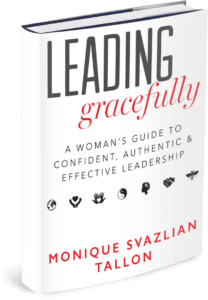6 Ways to Build Boundaries & Get More Recognition at Work
One of the more challenging aspects I’ve encountered both personally and professionally with the women I coach, is the ability to hold steadfast to our boundaries. Whether it’s saying no to a request by a co-worker or manager, or turning down a project that’s just not challenging enough, a lot of us find it challenging to say no and end up people pleasing and accommodating.
The reason for why we do this is simple – we just want to fit in. We just want to belong. It’s what Brene Brown talks about when she discusses the feelings of shame and inadequacy that lead us to do things just to feel accepted and liked by others. Turns out, according to her research, we as humans are wired towards togetherness – we want to feel included by our tribe. As women in the workplace, there’s yet another layer to this – most of us feel like we have to work harder to prove our value and worth so we end up taking on more work just to make sure others know we belong in the role or position we’re in.
This need for acceptance, belonging and the fear of shame or being left out of the tribe is what oftentimes leads us to bending our boundaries. The downside of that is that we aren’t strong in our “No” and oftentimes not only do we feel resentful afterwards, we end up betraying ourselves and our own values along with it, which makes us feel lousy anyway.
In a workplace context, this could also result in overwhelm and an inability to find a healthy work/life balance. Many times we end up taking on “office housework” or menial tasks so we can somehow convince others that we are superwomen and able to do it all. We make the incorrect assumption that we’ll be handsomely rewarded for this effort – when most of the time these efforts go totally unnoticed and we end up feeling unappreciated.
A lot of times women who are on the “Nice girl” side of the Leadership Tightrope end up saying yes to everything that is asked of them. They want to be liked by everyone and therefore bite off more than they can chew. The problem with this is that when we do this, we end up taking on tasks that don’t position us to develop or grow in our careers. Instead of taking on new projects or responsibilities that will stretch us and grow our skillset, we end up getting stuck planning team events or taking notes during meetings. None of this shouts “promotion material” and here’s the honest truth – no one has ever received a promotion just because they planned amazing office parties.
To change this, we need to learn to say no by first shifting our own perspective. As we value ourselves more, when we believe in our creativity, resourcefulness, intelligence and see ourselves as fully capable, we are able to ask others to value us more firmly in return.
Here are 6 tips I recommend to help you set and stick to boundaries so you can take on more meaningful work and help you get the recognition you deserve.
1. Value Yourself, Your Contributions and Own Your Gifts
Start with making a list of all the value you bring to the table – all your positive qualities, gifts, talents and expertise. Put that list somewhere prominent and refer back to it each day. Begin acknowledging yourself for your achievements and give yourself the praise you’re searching for externally. Being able to value yourself is the first step in being able to set strong boundaries. When we own our gifts and abilities, we can then let go of having to prove ourselves to others and it becomes easier to gracefully say no when necessary.
2. Pay Close Attention to Your Body
Our bodies are constantly sending us messages about our environment, the people around us and the situations we find ourselves in. If there is something that you don’t really want to do, your body will tell you – but you need to pay close attention.
For example if your body is rebelling, that means that you’ve said yes too much. Pay attention to your stomach pain, fatigue or a scratchy throat, these are the signs that saying no may be the right choice. Get comfortable with checking in with your body – practicing putting your attention and awareness on your bodily sensations and feelings throughout the day to make it a habit. Once we learn to trust our body’s signals, it can make it much easier to decide when we need to say no to something that doesn’t feel right.
3. Take Your Time Before Reaching a Decision
Oftentimes we feel like we need to give people an answer right away. Don’t rush to say yes immediately when you are unsure (aiming not to hurt anybody). Instead just say you’ll think about it or let them know you’ll get back to them in a few hours or even in a day. It’s easier to reject politely the next day.
4. Practice Saying No More Often
Start small. And little by little you will feel comfortable with your fair decisions. By getting into the rhythm of declining small tasks more regularly, you’ll get used to understanding where your boundaries lie. Here is a respectful way of saying no.
“I really appreciate that you thought of me for this project, but I have a few other commitments on my plate right now so I don’t think I’m the right person. Perhaps try asking Greg down the hall?
5. Keep in Mind – it’s not Personal
As people pleasers, most of the time we’re afraid of hurting the others’ feelings and worry that they might not think of us positively if we say no to them. But most of the time, people aren’t going to take your rejection personally – especially in a business context. Begin telling yourself that your no is not going to hurt this person’s feelings and they are not going to take it personally. Usually what happens is the opposite – many times people start respecting you more when you are honest with them. And if it’s a task that you would rather not do anyway, after a few rejections, they’ll probably stop asking you!
6. Begin Asking for Stretch Assignments
Now that you’re more comfortable saying no, it’s time to begin to say YES! Think about assignments, projects, skills or tasks that will stretch you, help you grow and challenge you. Envision where you want to be in 1, 2, 3 years and speak to your supervisor about what type of projects you can take on that will help you build the skills to get there. These types of “stretch” assignments not only will help position you for that promotion you’re aiming for, but it will prove to your peers and your manager that you’re proactive and ready to take on more. The more responsibility you have, the more visibility you get, which only elevates you in the eyes of those that make the decisions of who gets promoted.
Good boundaries free you | Sarri Gilman | TEDxSnoIsleLibraries



























